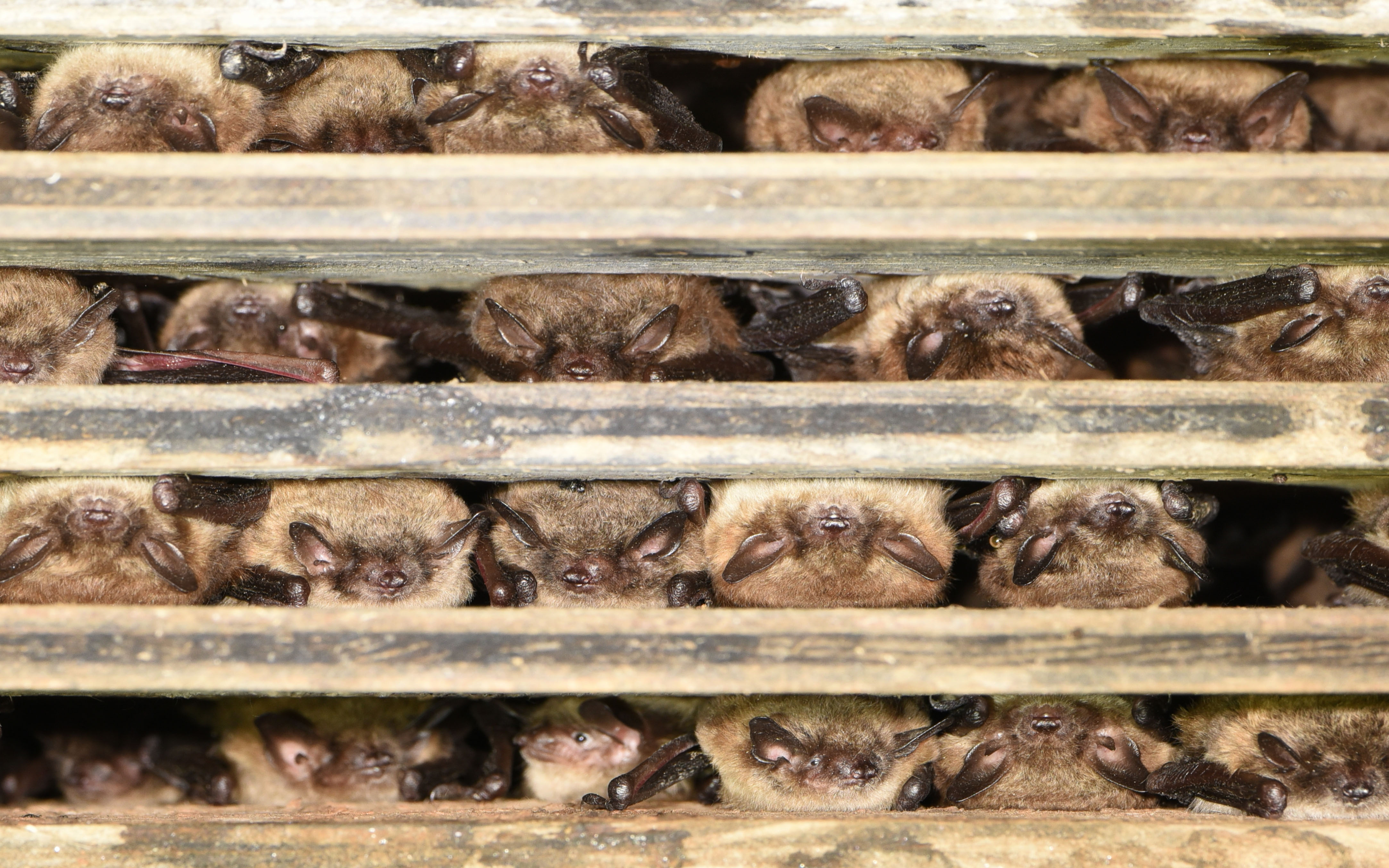Mounting suggestions are only -suggestions- and do not necessarily describe all safety measures, tools, materials, and other details that may be required to complete an installation. Bat houses and or/posts may be heavy and unwieldy, necessitating the use of ladders and/or heavy equipment. There may be exposure to heights, risk of falls, and/or risk of being injured by falling material. Consider the actual final lifting and installing of the bat house to be a several-person job. If you are not comfortable with the installation concepts consider seeking help of family, neighbors, or handyman. BCM is not liable for any injury or property damage caused during the installation of any bat house products; it is the sole responsibility of the installer to maintain safety to prevent injury or death resulting from any installation activity.
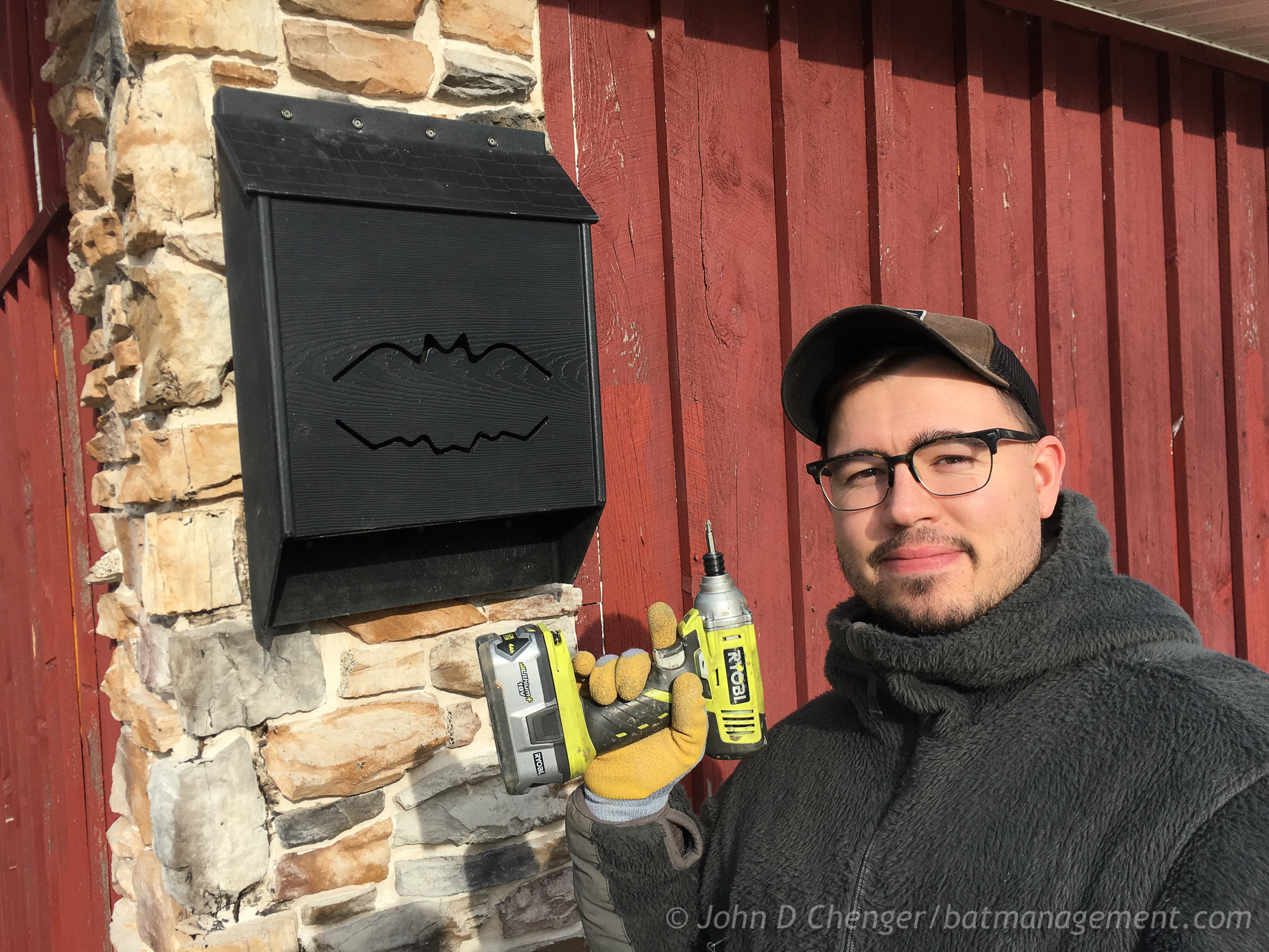
Mounting a new bat house directly on a wooden or masonry structure where bats are being evicted will almost guarantee a successful occupation. The bottom of the box should be at least 10’ off the ground (as well as 10’ above any obstructions like porch roofs and satellite dishes) and receives enough direct sunlight.
A large colony will produce an appreciable amount of guano that can over-fertilize the ground directly beneath. Be careful not to mount the bat house directly over window boxes, planters, doors, and walkways. In addition, bat guano may stain certain house paints. The daily dawn return of bats is responsible for droppings that inevitably splatter around the bat house and on nearby windows. Avoid placing a bat house near where cars are parked as the guano may foul automobile finishes over time.
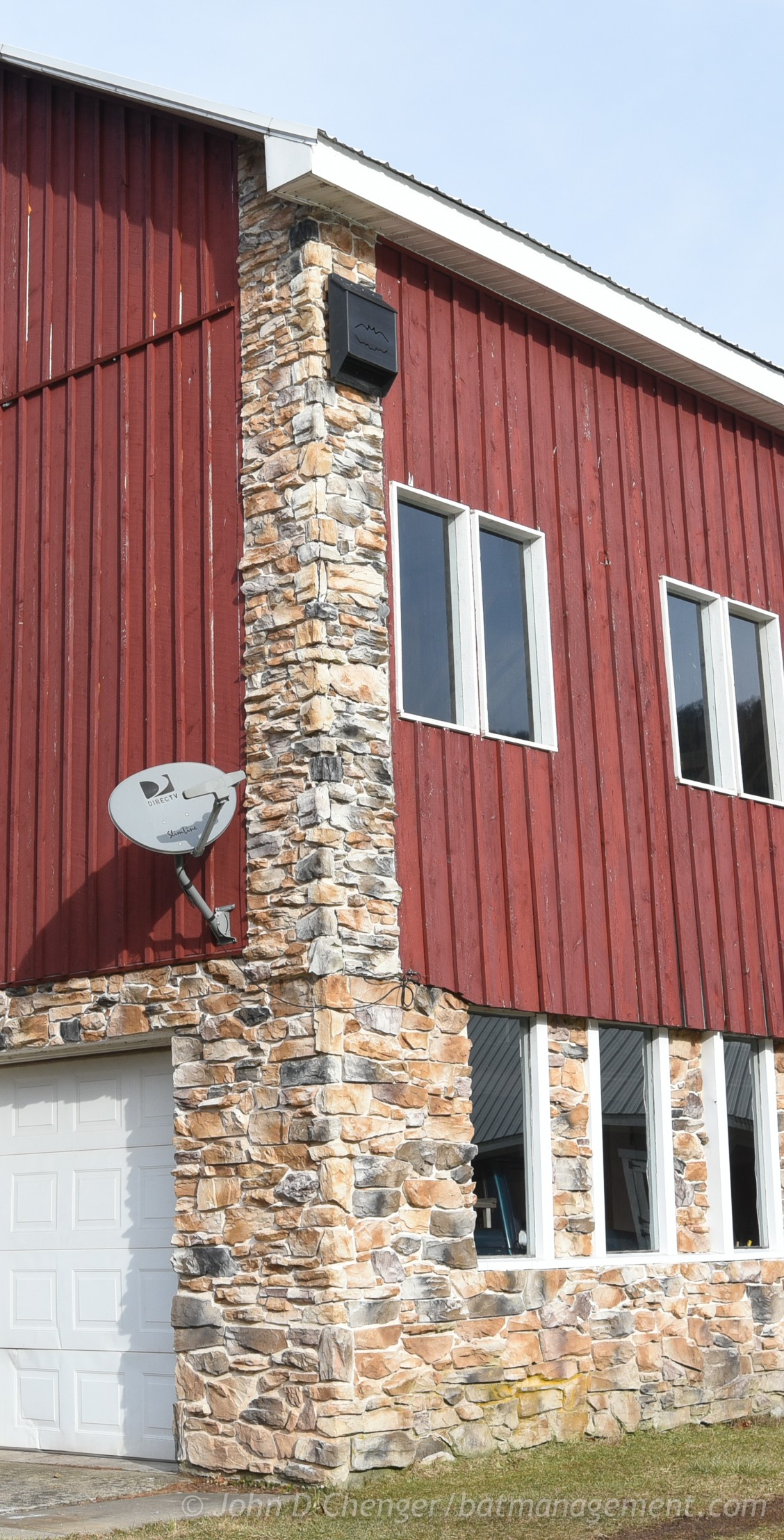
Structure mounting might be desired when evicting bats, if the yard is too small or too shady for a free-standing post mount, or if using a single chamber bat house that really needs more mass to retain heat. Installing a bat house within a few feet of a bat exit point almost always is successful in housing bats. However, it is not critical to mount the box on a structure to ensure a successful eviction project. Bat houses do not take the place of systematically bat-proofing the structure. If other roosts remain available, bat houses may see little use. If mounting on a structure in cool climates, choose a location on the building as high as possible that will NOT be shaded by overhanging eaves or obstructed by split-level architectural elements. If you are in a warm climate, it may be acceptable or preferable to mount with at least the roof will be shaded in the afternoon. Select the southerly side of the structure or chimney. Southeast (140° azimuth) is ideal.
BCM’s Mount Kit is available with appropriate hardware for siding and stone.The mount consists of wood spacers arranged on a plywood "perch panel" which is placed on the structure first to simplify mounting a bat house. The perch panel provides an additional roost crevice behind the bat house. Spacers also helps attach bat houses to uneven surfaces (e.g., brick walls or home siding). Deck screws or masonry screws can be used depending on the structure material. Masonry screws (2-3/4’’) work well on chimneys. Deck screws (3”-4'') are standard for wooden buildings. Pre-drill the spacers, as most long screws are difficult to install without stripping the heads. When installing into older block or wood structures, some trial and error may be required before finding at least two solid anchors per spacer.
The method for attaching the bat house to the spacers varies with how large the bat house is and where on the structure it is located. Small boxes may simply have screws partway started then hand carried up a ladder and installed. A more elaborate solution for a larger box involves hauling the bat house up the structure using a rope and pulley rigged through the top of a ladder. As the box hangs under the ladder it can be secured, by someone using a second, shorter ladder. Expect some trial and error to get ladder(s) and the bat house into correct positions. Take extra time to fine tune the rigging rather than attempt to hold the weight of the heavy box while driving screws. Friends and family will assist holding material and for big jobs consider renting a lift machine or hiring a handyman.
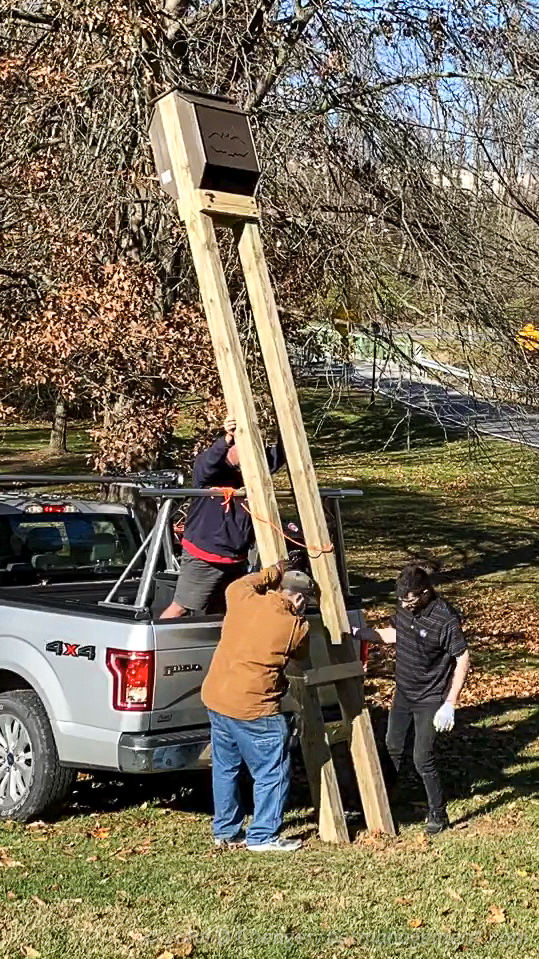
The benifit of post mounting is that you can select a location that is sunny enough for the mother bats to raise their young, but also a site that will be out of the way of human traffic. If you are exclusing bats from a building, post mounting a bat house one summer before planning an exclusion project is ideal. This eliminates the eventual need to move the box off the structure, and bats have plenty of time to investigate the bat house before being excluded from their preferred roost in the structure.
The bottom of any bat house should be at least 10 feet above the ground without large obstructions in front or below. BCM offers a Mount Kit with an extra roost crevice to attach your bat house to the pole. Pressure treated lumber is commonly used for outdoor applications and is readily available nationwide. 4''x6'' Posts are available at most lumber supply yards, marina/dock supply yards, and tractor supply/farm stores, though lengths of 16' (or more) may have to be special ordered. You can also construct a 4''x6'' from two 2''x6'' lumber sandwiched together, which will resist warping over time. Black locust posts will last longer than treated or even metal posts in some cases, but may be more expensive and difficult to find. The brackets and post can be painted with a quality exterior stain or paint, but the treated lumber should be painted ~3+ months after being manufactured and dry. The size and weight of larger bat houses, or multiple smaller bat houses, may make raising and setting the post cumbersome. If the post and box is to be assembled on the ground then raised in one operation, simplify the job by recruiting family, friends, and neighbors to help.

Photos at right: heavy bat houses assembled on sawhorses can be pushed, pulled, or lifted into place with certain vehicles or farm equipment and appropriate straps. Don't overthink things though; even back-to-back ColonyLodges can quickly be set upright by 3 people easily.
Using a post-hole tool and digging bar, excavate a hole at least 2.5-3 feet deep and ~8” in diameter, if possible. If the hole is sunk straight and clean only one 80 lb. bag of premixed concrete will be necessary. If more than one bat house is installed on the post, the hole should be closer to 3' deep and slightly wider to accommodate a second bag of concrete. When about to set the post, place the digging bar in the hole so that the post will ride down the pole rather than sticking into the side. Three people can -easily- lift the bat house attached to the post and walk it up right. In addition, the post can be pulled with straps to assist the lifters. If the hole is 2.5’ or more deep and not overly wide, the post will stand in the hole unsupported.
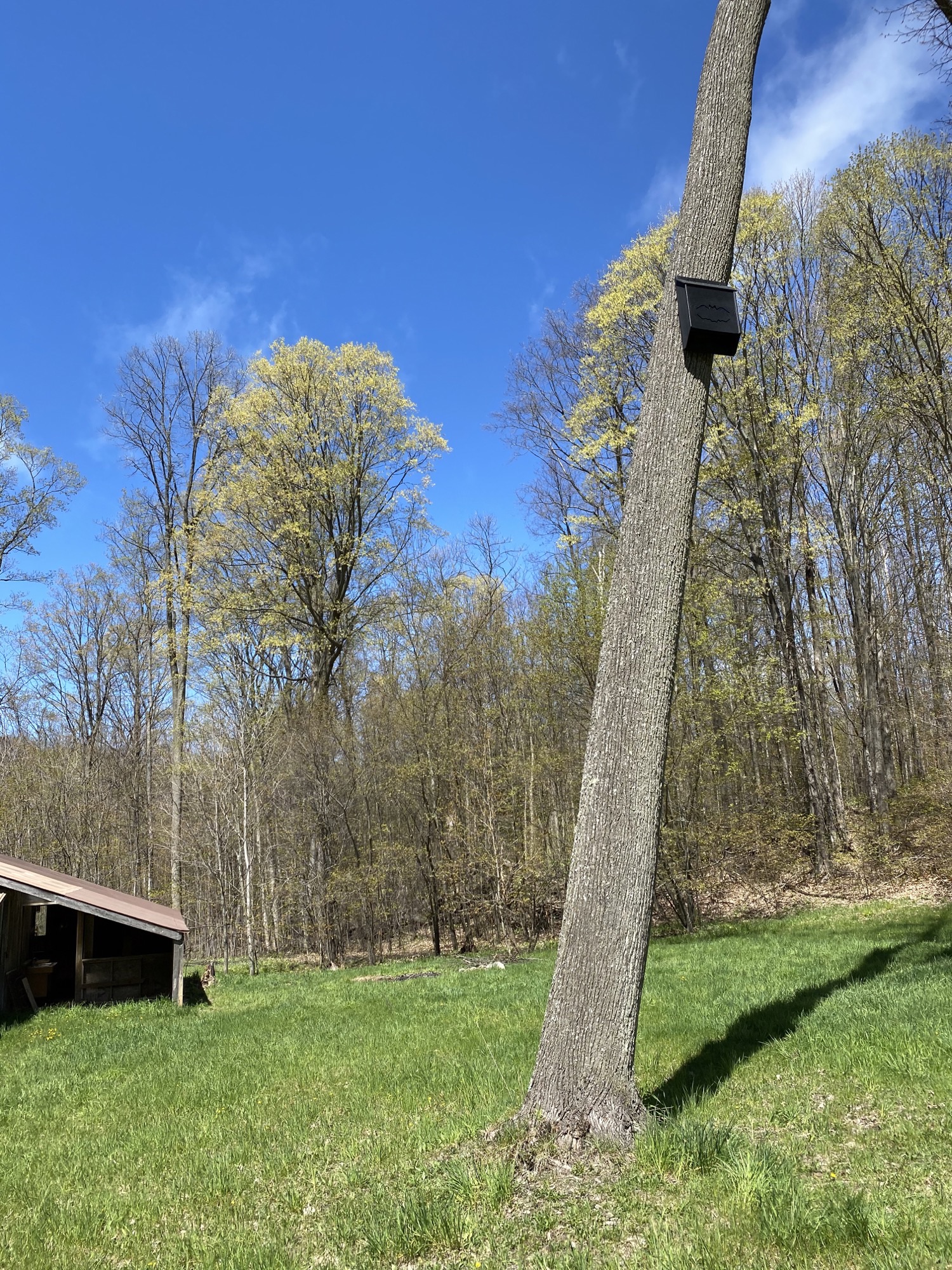
It is quite tempting to mount a bat house on a tree, after all, this is where bats are supposed to be living in the first place! First, be aware that wrapping a metal band around a tree or using anything other than aluminum or stainless steel hardware in a tree may kill it. In cool climates, the tree must not have limbs obstructing the direct morning sun, and this is rarely available. In warm climates, bats -will- use shaded bat houses that are on trees during certain times of the year, so in those areas it pays to experiment with multiple bat houses in different locations. Bat houses mounted on trees are always more vulnerable to predation than other mounting sites, but this may not be anything to worry about until a lot of bats are present.
If you happen to have a tree or snag meeting the criteria, then use a mounting bracket such as BCM’s Wood Post Mount Kit. For mounting to a live tree, obtain two ~4''+ stainless steel lag bolts to replace the galvanized lag bolts that come with the kit. Longer bolts may be necessary to go thru thick bark/rotten wood and into the real wood of the tree. Assemble the mount kit normally as directed and the Perch Panel will keep the Upper and Lower mounts in perfect alignment when going against the round, irregular tree. To reduce risk of harming the tree, only use a single lag bolt in each of the top and bottom mount brackets rather than 4 total normally used on posts. The mount kit will give you a flat surface to install the bat house on.
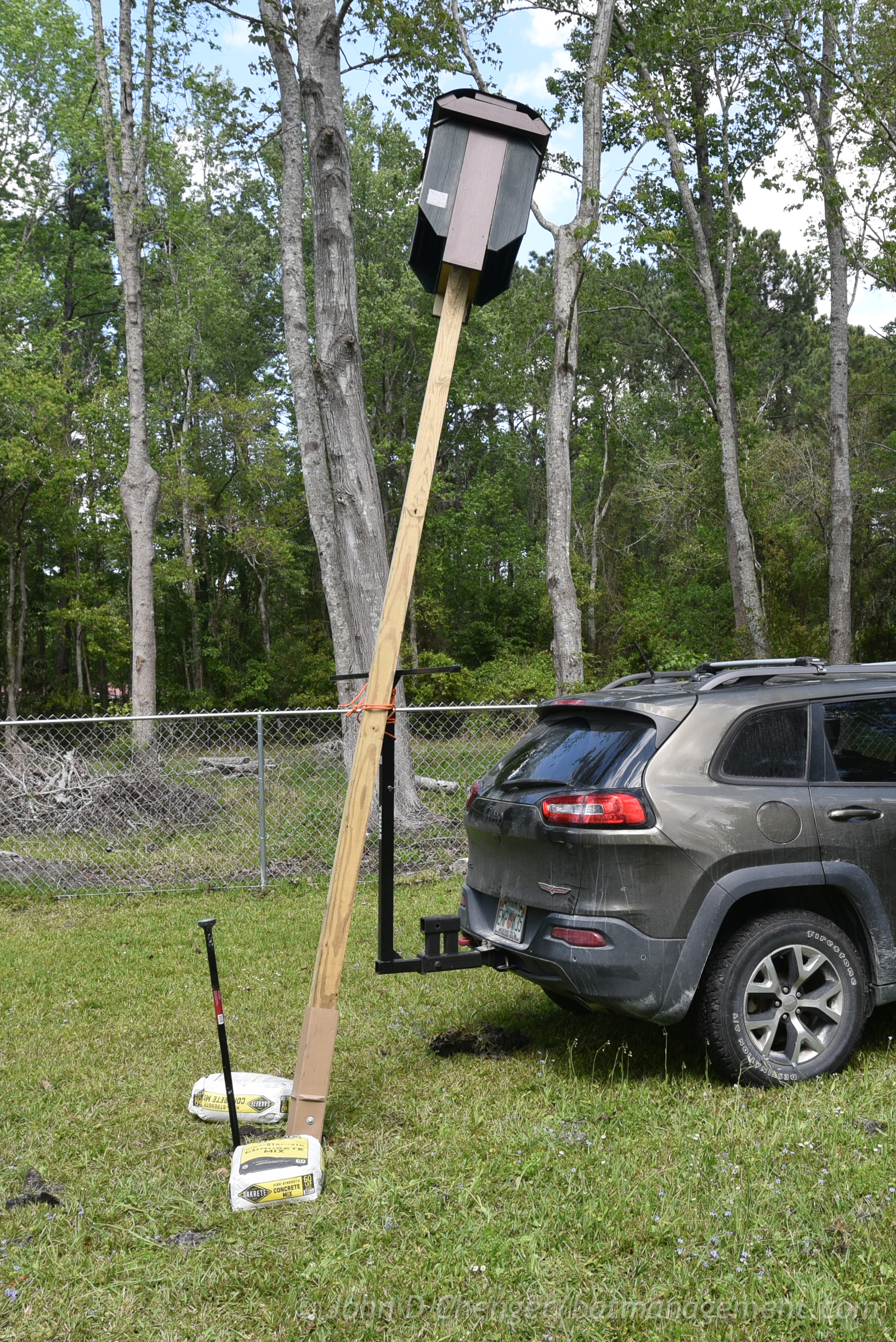
Posts with finished bat houses can even be installed by one person, with the aid of a truck or even car with appropriate roof rack used to carefully lever the pole vertical (Figure 8). Use a safety sling attached to the rack to prevent it from sliding off the rack prematurely. Similarly, posts may be picked up or levered vertically using certain tractor attachments, a Bobcat-type machine, or aerial lift.
Center the post in the hole by wiggling it hard to move the bottom of the post into the center. Find the post’s balance point and/or use a level; you may find the post perfectly balanced when leaning back slightly due to the added weight of a single bat house. Twist the post so that the front of the bat house is facing about 140° (use a compass), or southeast. This allows the bat house to face directly into the sun at 10:00 a.m. on a spring or fall morning. Add concrete by simply alternating dumping 1/3 of the concrete and a small amount of water into the hole and mix with the digging bar. Once 1/2 bag or more of concrete is in the hole, the post will no be adjusted further. If the hole is too large and concrete mix is scarce, intersperse softball-sized rocks into the mix to use as fill. Mound up the concrete aroundthe post so that water does not collect. Do not cover with mulch or dirt; you want no moisture to lay next to the post over time, which accellerates rot.
Backyard Bat Houses
Learn the differences between our base bat houses suitable for starting backyard bat colonies.
Siting and Color
Consider the options on where to locate your bat house so it's good for bats and -for you-.
Installing a Bat House
Trees, buildings, or poles?
Installing a bat house on something high can be a job, here are suggestions on how to move it along.
Maintaining a Bat House
Our bat houses are low maintainance, but there are some long term situations to be aware of.
Human Health Concerns
Bats attract more than their fair share of negative press, here are some facts to help prospective bat landlords rest easier.
Can my bat house be too hot?
Advice from real-world experts on how to recognize when is too hot, when to be concerned, and how to mitigate.

